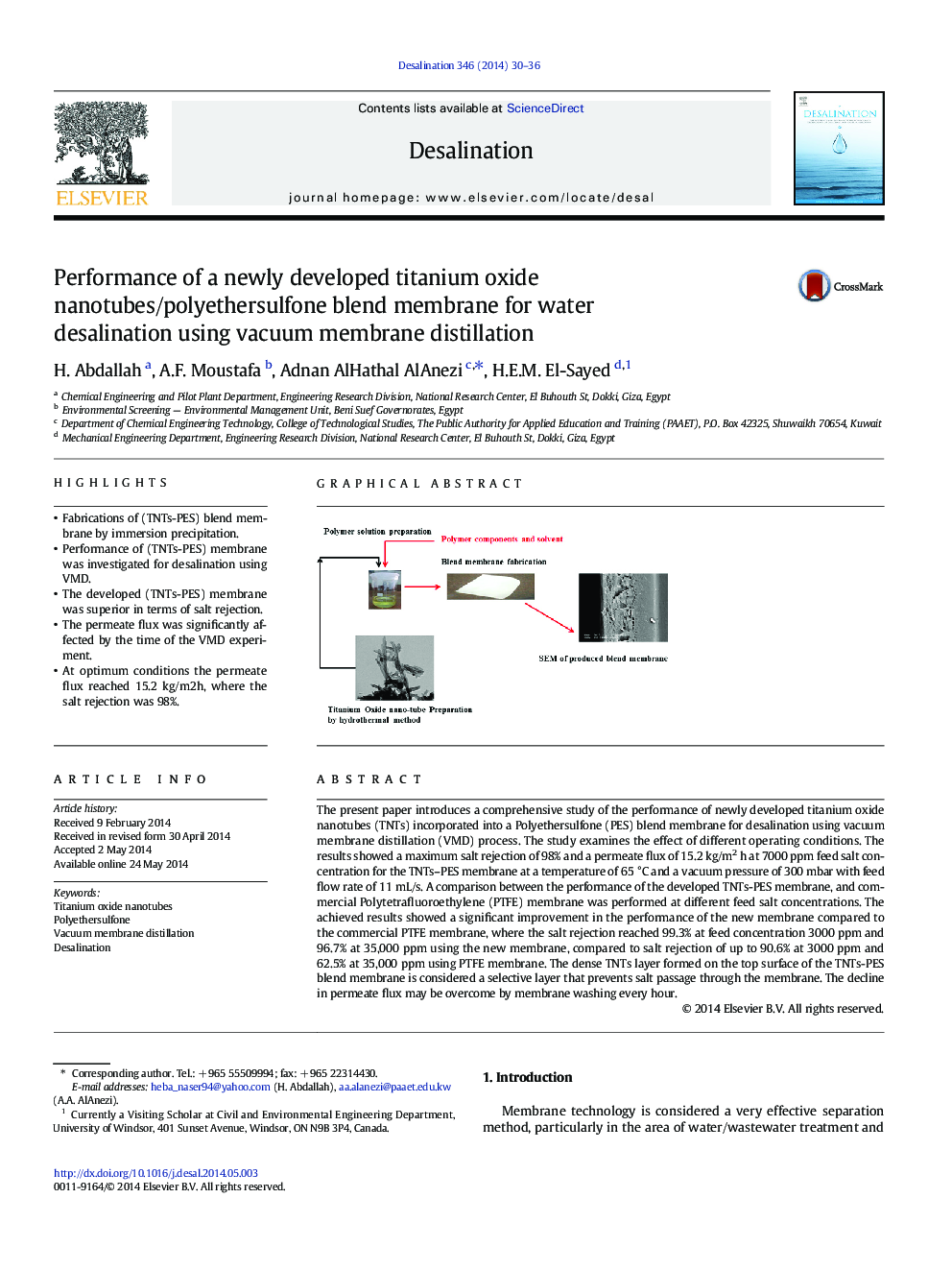| Article ID | Journal | Published Year | Pages | File Type |
|---|---|---|---|---|
| 623478 | Desalination | 2014 | 7 Pages |
•Fabrications of (TNTs-PES) blend membrane by immersion precipitation.•Performance of (TNTs-PES) membrane was investigated for desalination using VMD.•The developed (TNTs-PES) membrane was superior in terms of salt rejection.•The permeate flux was significantly affected by the time of the VMD experiment.•At optimum conditions the permeate flux reached 15.2 kg/m2h, where the salt rejection was 98%.
The present paper introduces a comprehensive study of the performance of newly developed titanium oxide nanotubes (TNTs) incorporated into a Polyethersulfone (PES) blend membrane for desalination using vacuum membrane distillation (VMD) process. The study examines the effect of different operating conditions. The results showed a maximum salt rejection of 98% and a permeate flux of 15.2 kg/m2 h at 7000 ppm feed salt concentration for the TNTs–PES membrane at a temperature of 65 °C and a vacuum pressure of 300 mbar with feed flow rate of 11 mL/s. A comparison between the performance of the developed TNTs-PES membrane, and commercial Polytetrafluoroethylene (PTFE) membrane was performed at different feed salt concentrations. The achieved results showed a significant improvement in the performance of the new membrane compared to the commercial PTFE membrane, where the salt rejection reached 99.3% at feed concentration 3000 ppm and 96.7% at 35,000 ppm using the new membrane, compared to salt rejection of up to 90.6% at 3000 ppm and 62.5% at 35,000 ppm using PTFE membrane. The dense TNTs layer formed on the top surface of the TNTs-PES blend membrane is considered a selective layer that prevents salt passage through the membrane. The decline in permeate flux may be overcome by membrane washing every hour.
Graphical abstractFigure optionsDownload full-size imageDownload as PowerPoint slide
